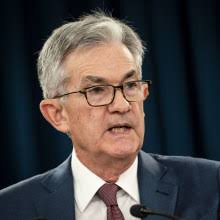EROME – Inflation is like an uninvited guest at a dinner party—it sticks around longer than expected and makes things uncomfortable. The latest Consumer Price Index (CPI) report for January has shown inflation accelerating once again, raising concerns that any expected interest rate cuts might be delayed. But what does this mean for everyday people and businesses? Let’s break it down in simple terms.
Table of Contents
| Sr# | Headings |
|---|---|
| 1 | Understanding the CPI Report |
| 2 | What Drove Inflation Higher in January? |
| 3 | Why Are Interest Rate Cuts Important? |
| 4 | How the Federal Reserve Reacts to Inflation |
| 5 | Will Rate Cuts Be Delayed? |
| 6 | Impact on Everyday Consumers |
| 7 | Effects on Businesses and Investments |
| 8 | Housing and Rent Prices Under Pressure |
| 9 | Grocery and Energy Costs—What to Expect |
| 10 | How Can You Protect Your Finances? |
| 11 | What Experts Are Saying |
| 12 | Comparing Inflation Trends Over the Years |
| 13 | Government Policies and Their Role |
| 14 | Looking Ahead: What’s Next for Inflation? |
| 15 | Final Thoughts |
1. Understanding the CPI Report
The Consumer Price Index (CPI) is a key measure of inflation that tracks the average change in prices paid by consumers for goods and services. When CPI goes up, it means the cost of living is increasing. The latest January CPI report showed a higher-than-expected increase, signaling that inflation is not cooling as fast as many had hoped.
2. What Drove Inflation Higher in January?
Several factors contributed to the rise in inflation last month:
- Housing and rent prices continued to climb.
- Food and grocery costs saw slight increases.
- Energy prices fluctuated but remained relatively high.
- Wages and labor costs put pressure on businesses, which passed costs onto consumers.
3. Why Are Interest Rate Cuts Important?
When inflation is high, the Federal Reserve raises interest rates to slow down spending. But high-interest rates make borrowing more expensive, affecting everything from mortgages to credit cards. If inflation were under control, rate cuts would make loans cheaper and stimulate economic growth.
4. How the Federal Reserve Reacts to Inflation
The Federal Reserve (the Fed) is like a thermostat for the economy. When inflation gets too hot, it raises rates to cool things down. But if inflation stays stubbornly high, the Fed might delay cutting rates, keeping borrowing costs higher for longer.
5. Will Rate Cuts Be Delayed?
Many experts predicted rate cuts in mid-2024, but the latest CPI data suggests the Fed might push them further back. If inflation remains persistent, the central bank will likely hold off until there are clearer signs of cooling.
6. Impact on Everyday Consumers
Higher inflation means the cost of living keeps rising, making it harder for families to afford essentials. Delayed rate cuts could lead to:
- Higher mortgage and loan payments
- More expensive credit card debt
- Reduced purchasing power
7. Effects on Businesses and Investments
Businesses may struggle with higher borrowing costs, leading to slower expansion and hiring. Investors could see market volatility, as stock markets react to inflation and interest rate decisions.
8. Housing and Rent Prices Under Pressure
One of the biggest contributors to inflation is housing costs. With high interest rates, mortgage rates stay elevated, making it tough for buyers. Renters also feel the squeeze as landlords raise prices to cover costs.
9. Grocery and Energy Costs—What to Expect
- Food prices might remain high due to supply chain issues and labor costs.
- Gas prices could fluctuate depending on global oil production and geopolitical tensions.
- Utility bills may see seasonal increases, especially during colder months.
10. How Can You Protect Your Finances?
To manage rising costs, consider:
- Cutting unnecessary expenses
- Paying down high-interest debt
- Looking for investment opportunities that hedge against inflation
- Building an emergency fund
11. What Experts Are Saying
Economists have mixed opinions. Some believe inflation will gradually ease, while others warn it could remain elevated, keeping interest rates high for longer than expected.
12. Comparing Inflation Trends Over the Years
Looking back at historical inflation rates, we see periods of high inflation followed by stabilization. The key question remains: Will history repeat itself?
13. Government Policies and Their Role
Government policies, such as stimulus packages and tax regulations, impact inflation. If policymakers introduce new measures, they could influence the timeline for rate adjustments.
14. Looking Ahead: What’s Next for Inflation?
Experts are watching upcoming economic reports to see if inflation continues to rise or starts cooling down. The next few months will be crucial in determining whether the Fed moves forward with rate cuts.
15. Final Thoughts
The January CPI inflation report has thrown a wrench into expectations for rate cuts. While many hoped for relief, inflation’s persistence means we might have to wait longer. Understanding these economic shifts can help individuals and businesses make informed financial decisions.
FAQs
1. Why did January’s CPI inflation increase?
Inflation rose due to higher housing costs, increased food prices, and rising energy costs, among other factors.
2. Will interest rate cuts happen soon?
Not necessarily. The Fed might delay rate cuts until inflation shows consistent signs of cooling.
3. How does high inflation affect everyday people?
It increases the cost of living, making essentials like housing, groceries, and utilities more expensive.
4. What can I do to manage rising costs?
You can budget wisely, reduce unnecessary spending, and pay off high-interest debts to minimize financial strain.
5. What industries are most affected by delayed rate cuts?
Real estate, finance, and retail are among the sectors that feel the impact of prolonged high interest rates the most.
